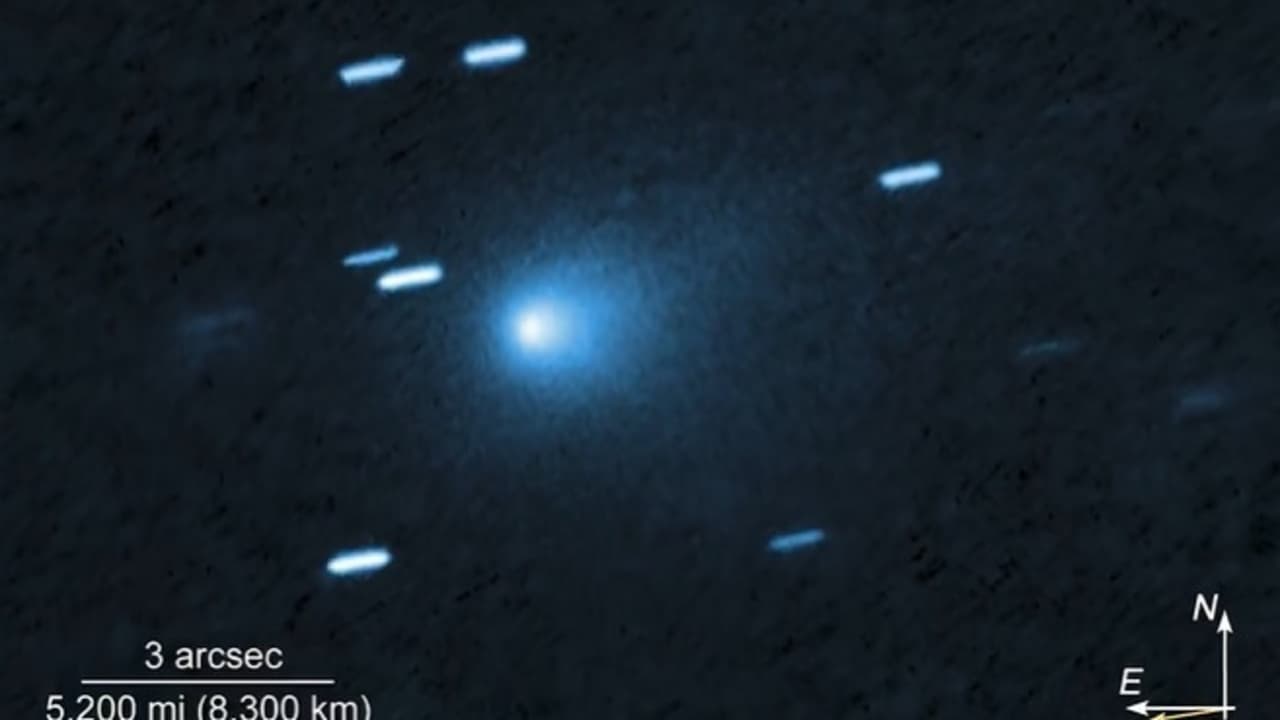Hubble has taken the clearest image to date of the interstellar comet 3I/ATLAS, which is racing through our solar system at 130,000 miles per hour.
The cosmos has revealed another celestial marvel—NASA’s Hubble Space Telescope has captured the sharpest image yet of the interstellar comet 3I/ATLAS, a cosmic drifter blazing through our solar system at an astonishing 130,000 miles per hour. Astronomers across the globe are harnessing the collective power of Hubble, the James Webb Space Telescope, TESS, the Neil Gehrels Swift Observatory, and the W.M. Keck Observatory to unravel the mysteries locked within this icy wanderer. Together, these missions aim to decipher the comet’s frozen nucleus, dust emissions, and chemical composition.
Hubble’s crystal-clear gaze has allowed researchers to place tighter constraints on the comet’s nucleus, estimating its diameter to be no larger than 3.5 miles (5.6 km) and possibly as small as 1,000 feet (320 m). Yet, even with Hubble’s legendary vision, the nucleus itself remains shrouded, veiled by layers of dust and gas.
The telescope also caught sight of a dramatic dust plume erupting from the Sun-warmed side of the comet, along with the faint beginnings of a tail trailing behind. The comet’s dust-loss activity mirrors that of Sun-bound comets within our solar system, but there is one critical difference—3I/ATLAS is not from here.
This interstellar visitor has spent billions of years adrift in the cold abyss of the Milky Way, gaining speed with every gravitational sling from stars and nebulae it passed, before plunging into our solar system. Its velocity, the fastest ever recorded for a solar system interloper, is a testament to its timeless journey.
“No one knows where the comet came from. It’s like glimpsing a rifle bullet for a thousandth of a second. You can’t project that back with any accuracy to figure out where it started on its path,” explained David Jewitt of the University of California, Los Angeles, who leads the Hubble science team.
Jewitt added, “This latest interstellar tourist is one of a previously undetected population of objects bursting onto the scene that will gradually emerge. This is now possible because we have powerful sky survey capabilities that we didn’t have before. We’ve crossed a threshold.”
Discovered on July 1, 2025, by NASA’s Asteroid Terrestrial-impact Last Alert System (ATLAS)—an asteroid early warning network run by the University of Hawai‘i—this comet has captivated astronomers worldwide. While it poses no danger to Earth, its fleeting visit offers a rare window into the cosmic relics drifting between stars.
For now, stargazers can track 3I/ATLAS with ground-based telescopes until September, before it vanishes behind the Sun’s glare. It is expected to make a dramatic reappearance by December.
